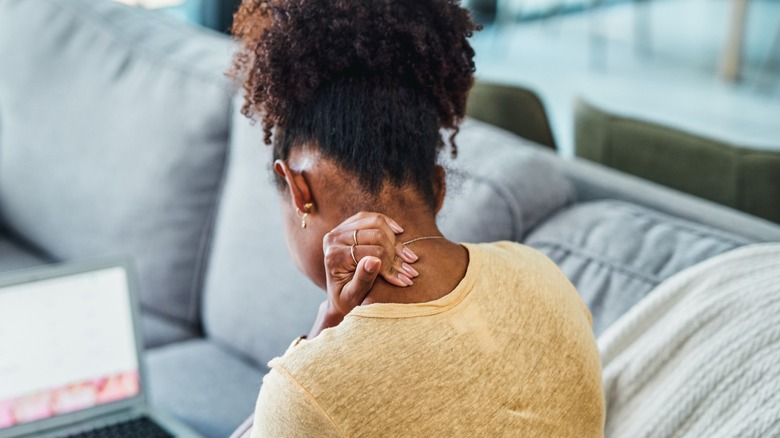The Viral 'Traptox' Treatment Claims To Ease Shoulder Tension - Here's What We Know
The beauty industry is a multi-billion-dollar market that's expanding by the hour. Statista reports that US customers contribute the most to the overall income of the industry, around 91.4 billion dollars, thus bringing in almost double the revenue of its runner-up, China.
Americans love their beauty products, so it's no wonder that every time you check the web, there's a new miracle product or a treatment everyone seems to swear by. If you like your beauty results to be obvious immediately, you've probably turned to or have at least thought about Botox.
With Botox revolutionizing skincare, gone are the days when you had to wait for months for a product to work its magic. Also, it isn't just used for aesthetic purposes; it's no secret that masseter Botox can help with TMJ and jaw pain. The medical use of Botox is now migrating south, with the newest injectable trend — the 'traptox' treatment — claiming to ease shoulder tension.
'Traptox' can correct bad posture
Botox is a toxin that's injected in controlled quantities to temporarily relax muscles, and even though it's largely used for aesthetic purposes, according to Medical News Today, it is FDA-approved for a variety of medical uses, including upper limb spasticity, migraines, and others.
The new viral treatment, called the 'traptox' treatment, involves injecting Botox in the trapezius muscles to ease stiffness and pain but also to make them appear slimmer, Daily Mail reports. Bad posture seems like an inevitable consequence of modern-day living as we constantly hunch over our phones and computers, but not anymore. Lauren Pack, a registered nurse at the GoodSkin Clinic, tells Byrdie that the viral Botox treatment affects the overall posture of the body as it relaxes the shoulder muscles and basically forces you to correct your stance, even engaging the abs in the process.
Double board-certified plastic surgeon David Schafer, MD, explains how the treatment works its magic to visually soften the trapezius in a conversation with Daily Mail. "[Botox blocks] the signal between the nerve and muscle. When injected into the trapezius muscle, the muscle shrinks from decreased stimulation, giving the neck a thinner, more contoured appearance," Schafer says. The effect lasts anywhere from 3 to 5 months, depending on the dosage, after which the procedure can be repeated.
Don't rely on it long-term for pain relief
As with all medical procedures and treatments, the viral 'traptox' has certain side effects you should look out for. Pack explains that your shoulder and neck muscles could get sore faster than usual when you slouch because the muscles you're engaging have been weakened by the Botox. Other than that, Botox in general, wherever it is injected, can cause flu-like symptoms, tenderness, and possible infection at the injection site, as well as impaired vision and breathing problems, as per Mayo Clinic. Consult with your doctor before proceeding, and make sure to get the 'traptox' treatment done by a verified specialist, Schafer advises.
A meta-analysis published by the journal Toxins has concluded that the use of Botox in the neck and shoulder region could be an effective treatment for treating chronic shoulder pain. However, the underlying cause of discomfort in the region should be dealt with first and foremost, as the Botox is treating the symptoms and not the root of the problem. It's important to know why you're having shoulder pain in the first place to be able to address it properly; otherwise, you're just prolonging it. Think of the 'traptox' treatment as a complementary measure instead of exclusively relying on it.

